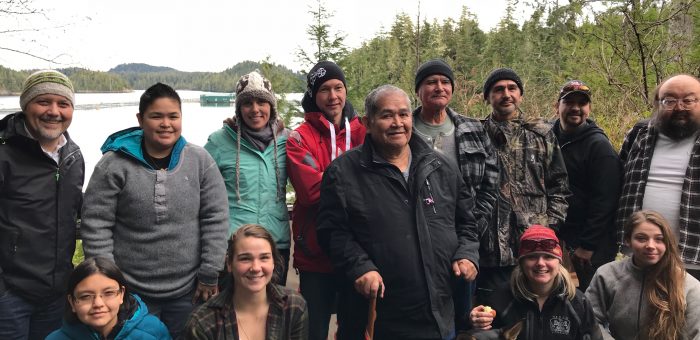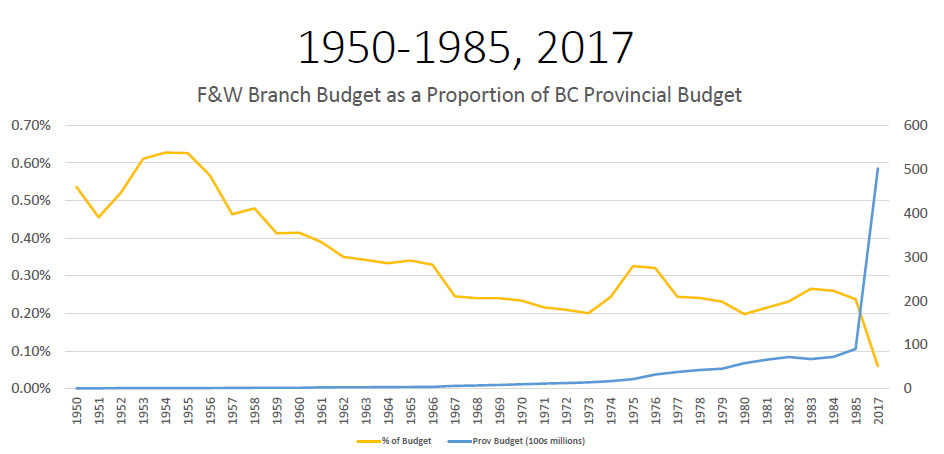Uncategorized
Exploring the mandate and expanded scope of Innovate BC
Today in the BC Legislature we debated Bill 4: British Columbia Innovation Council Amendment Act at the committee stage. As I discussed earlier, this bill renames the BC Innovation Council as Innovate BC and expands its mandate.
This bill represents further developments towards implementing an important initiative that formed a component of the BC Green economic plan in the last campaign.
In my exchange with the Minister of Jobs, Trade and Technology, I sought to explore his vision of Innovate BC. I was delighted with his thoughtful responses.
Below I reproduce the text and video of our exchange.
Text of Exchange
A. Weaver: Continuing with section 3, I have one somewhat technical question and a number of broader questions.
The Chair: Members, we are on section 5.
A. Weaver: Sorry, section 5 of Bill 4, section 3 that is being amended in the BCIC Amendment Act. Thank you for that clarification, hon. Chair.
The first question is with respect to section 3(e) of the act that is to be amended, not section 5 of the bill that’s the amendment act. It says specifically there that one of the purposes is to “gather and organize information on scientific research.” I’m questioning why the word “technological” was not added as well as “scientific research.” The question is: is this being left out explicitly, or is science to include technology here?
The reason why I do that is that a number of times in this section — that is, section 3 of the act that’s amended, section 5 of the act that’s doing the amending — “science” has been replaced by “science and technology.” And it’s really this one place where it hasn’t. So my question to the minister is: does this mean to include scientific and technological research, as it says, actually, earlier in the same section?
Hon. B. Ralston: I just wanted to clarify the member’s question. In the previous act, he seems to be referring to section 3(e), which reads: “…gather and organize information on scientific research.” Is that correct?
A. Weaver: That is correct. I’m wondering whether it should be “scientific and technological research,” because we’re changing it in (d) and (f) there. Also, earlier in that actual section 3 there, it talks about the importance of the “development and dissemination of scientific, technological and scholarly knowledge.”
I’m wondering whether the research is actually also technological here. It may sound like semantics, but I don’t know whether it’s just inadvertent or whether it’s deliberate.
Hon. B. Ralston: I better understand the member’s question now.
Section (e) focuses, in the previous act, on scientific research. The amendments are to (d) and (f), substituting for “science policy”, “science, technology and innovation policy.” The focus there is not on research but on policy.
I don’t think there was an intention to change (e). It was rather to expand the scope of the policy that would flow from, whether it’s, scientific research or technology in general. I think that’s the reason for the distinction.
A. Weaver: I appreciate the clarification. To further that, though, if the minister is able to look at section (c), it actually talks about the “development and dissemination of scientific, technological and scholarly information.”
I’m wondering whether there’s an inconsistency there. On the one hand, you’re disseminating and developing scientific, technological and scholarly research, but on the other, you’re just looking at the science aspect.
Hon. B. Ralston: I don’t think there’s an intention to emphasize or create a difficulty there. The focus is on the development of a broader policy beyond science policy, technological policy and innovation policy.
That’s clearly not the intention to…. I think the member has made a perceptive point, but I don’t think it really detracts from the purposes of the amendment.
A. Weaver: Thank you for the clarification.
I have a number of general questions about the role of Innovate B.C. In particular, I’m wondering if the minister could identify the relationship between the innovation commissioner and Innovate B.C., as reconstituted in this amended act here.
Hon. B. Ralston: Innovate B.C. and the innovation commissioner will be separate entities, but they will work closely together, obviously.
The commissioner is mandated to be an advocate for the tech industry, both here in British Columbia — to our federal counterparts — and, indeed, abroad. The commissioner will interact with board members and will be an ex officio member — will be invited to participate in Innovate B.C.’s board members as an ex officio member. There will be a close relationship, but the office of the innovation commissioner will be independent of the agency.
A. Weaver: Thank you for the answer. It actually answered my next question. Would the innovation commissioner be a member of the board or an ex officio member? That has been clarified as well.
My next question is with respect to…. With this new vision, as outlined in section 5 of the amendment act, pertaining to an amendment in section 3 of the original act, what is the…? If the minister could articulate in a few words what he would define as the new mission statement for Innovate B.C…. Has the minister got an idea in mind? If he were to succinctly express, in two sentences…. What is the mission statement of Innovate B.C., as reconstituted here?
Hon. B. Ralston: I’ve attended — and I’m sure, probably, the member has — board meetings or retreats of organizations where a mission statement will sometimes be worked on for days, if not weeks, and a lot of internal debate will take place about the exact wording of a mission statement. So to ask me to give a precise mission statement here is something that I approach with some caution.
The goal of the organization is to focus on and use innovation and support for innovation to catalyze companies to be more successful in what they do, or even research institutions to be more successful. It’s a broad look at the power and transformational force of innovation as applied to a wide range of human and societal problems.
A. Weaver: That’s very helpful, and I would never ask the minister to develop a mission statement in committee stage. It would simply be something that he could not be held accountable to — understandably so. I have, too, been in those board meetings that have taken days to decide whether it should be a “that’ or an “an” or “they.”
My next question that is following on that previous question…. Actually, as articulated here in section 5(b), where it uses the words “innovation policy,” I’m wondering if the minister would be able to define specifically what he means by innovation.
Hon. B. Ralston: I did have a discussion with the member before lunch, and I got an opportunity to think about the question, which he very kindly told me he was going to ask me in advance.
I don’t think I’d want to be confined to a single definition of innovation. One looks at different institutions, and innovation has different effects and consequences. For example, research institutions, whether it’s catalyzing or driving the creative and intellectual abilities of researchers and students or whether it’s the kind of innovation that drives companies of all sizes to develop either new products or new services that allow them to grow and fuel the economy.
Clearly, innovations can be big, can be huge, whether we’re thinking of a company like General Fusion, which I’ve met with and I’m sure the member is familiar with, where the innovation that they’re recommending would literally transform the world — I don’t think that’s an understatement — or whether there are small process innovations in the way in which a manufacturing process goes forward. Sometimes practitioners on the shop floor will think of a way that things might be improved. That, too, would be an innovation.
I think what we’re hoping to do is to take a wide view of innovation in all its aspects and look to it, in a competitive and rapidly changing world, to draw on the creativity and talent of the people of British Columbia and use innovation and creative change to solve human problems, make things better, make companies grow and prosper and generally enhance the quality of life of everyone in the province.
A. Weaver: Thank you for the very helpful response.
My last question is on the issue of technology. We’ve heard a lot of discourse. I thank the member for Shuswap, who asked a number of probing questions, and the minister for his responses.
We’ve heard a lot about innovation in technology. I’m wondering if the minister could expand upon what he means by technology, more for clarifying the public record. Many people often think that technology means apps and stuff that has chips on it. Here, the minister has a broader definition of what technology is — innovation in technology and innovation in general. In what areas other than just chips, computers or apps is he thinking when he’s talking about innovation, perhaps, in technology and elsewhere?
Hon. B. Ralston: I would adopt the answer that the member suggested, which is a broad scope of innovation. I agree with him that sometimes there’s a view that innovation is confined to software developers in downtown Vancouver. That is most assuredly not the case. Whether it’s in Kamloops at the Kamloops Innovation Centre, in Prince George at the clean-tech innovation hub that’s being developed by the economic director there at the city hall, or in Victoria here with Tectoria, it’s certainly geographically broad. The scope of the problems that are tackled — and what is meant by technology — is very broad indeed.
Technology is capable of revolutionizing and changing very traditional industries, such as the mining industry. I think I’ve repeatedly given a couple of examples. MineSense, which is a company using the Internet of things and sensors, devised a process to examine ore that’s been extracted and sort it more quickly, more thoroughly and more efficiently, thereby increasing the efficiency and, ultimately, the profit of the company. LlamaZOO, which has a visualization technology that looks at a mine before it’s developed, inputs all the data and then represents that in a visual display of the minesite itself, in a way that helps people to understand what the mine might look like, what the ore body might look like it or how it may be extracted more efficiently.
I don’t think I would want to be confined by that narrow definition of technology, certainly, whether it’s technology or it’s innovation solutions applied to climate change, or life sciences or ICT, across the board. Some people speak…. There’s an institution at Simon Fraser University that speaks of social innovation — in other words, applying some of the same techniques, some of the same inspiration and some of the same talent to major social problems, whether that might be addiction or the problems of aging.
I think there’s always room, and the hope is that there are lots of solutions coming that can be implemented to solve problems and make life better for everyone.
Video of Exchange
Calling on the province to establish secretariat responsible for wild salmon
This week we rose each day during Question Period to ask the government about what, if anything, it was doing to protect wild salmon along the coast of British Columbia. Midweek I provided an update following the question I asked.
Today we concluded our line of questioning by calling on the government to establish a secretariat responsible for wild salmon.
Below I reproduce our accompanying news release.
Media Release
B.C. Green caucus calls on province to establish secretariat responsible for wild salmon
For immediate release
March 1, 2018
VICTORIA, B.C. – The B.C. Green caucus is calling on the government to immediately establish a secretariat responsible for wild salmon. The caucus’ call comes after a week of questioning the government over its plans to protect wild salmon.
“Wild salmon are a foundational B.C. species of vital importance to our economy and to our communities,” said Adam Olsen, spokesperson for natural resources and agriculture. “The MLAs that now sit on the government side of the house are well aware of the risks facing this species, having often drawn attention to this issue when in opposition. It is time to move beyond words and take action. There is absolutely no reason to delay taking action to help restore B.C.’s wild salmon stocks to levels that support a healthy environment and a thriving wild salmon fishery.”
Andrew Weaver, leader of the B.C. Green Party, added that the Premier’s response today strengthens the case for a secretariat: “Even the Premier acknowledges that the questions posed to his government this week demonstrate serious inter-jurisdictional and cross-ministerial challenges. As Adam argued today, secretariats have been created to respond to issues like climate change and conflict of interest. A dedicated, empowered secretariat would ensure this issue of importance to so many British Columbians, and especially coastal First Nations, is given the prioritization it deserves.”
To be effective, the secretariat responsible for wild salmon would need to granted adequate funding and authority. A wild salmon secretariat could streamline and coordinate all the work being done and stand as a united representative in negotiations with DFO.
“At present, responsibility for steelhead and wild salmon is split among six government ministries in addition to the federal Department of Fisheries,” added Sonia Furstenau, spokesperson for environment. “It has become clear that this confusing, inefficient system is not making headway on the policy changes that are needed to promote healthy levels of wild salmon stocks. I am proud to stand with my colleagues in calling for this much-needed office.”
-30-
Media contact
Jillian Oliver, Press Secretary
+1 778-650-0597 | jillian.oliver@leg.bc.ca
Paying tribute to Dave Barrett in the BC Legislature
Today in the BC Legislature the Premier, Leader of the Official Opposition and I paid tribute to former NDP Premier Dave Barrett who passed away on February 2, 2018.
Below I attach the video and text of my tribute.
Video of Tribute
Text of Tribute
A. Weaver: I rise to pay tribute on behalf of the B.C. Green caucus to a great British Columbian, Dave Barrett, who passed away on February 2 of this year. I also wish to extend my sincere condolences to his family gathered in the gallery today.
Dave Barrett dedicated much of his life to the service of British Columbians. He did so with passion. He did so with commitment. He did so with integrity, and he did so both here in the B.C. Legislature as well as in the Houses of Parliament in Ottawa.
Dave Barrett, without a doubt, was one of Canada’s great Premiers. During his time as Premier from 1972 to 1975, his government passed a remarkable 367 bills, averaging one every three days. Much of his legacy has stood the test of time. His government created ICBC, launched PharmaCare and passed the human rights code, to name but a few of his impressive and lasting achievements.
In 1973, British Columbia was faced with sprawling urban development that threatened to swallow up precious agricultural land, including some of the best farmland in Canada. It was a challenge with opponents down every avenue, and one that a timid political leader would likely have avoided. Premier Dave Barrett and his government rose to the challenge through principled and focused leadership.
They preserved Cypress Bowl — what he described as his greatest legacy — and they protected vast swaths of land from developing by creating the agricultural land reserve, ensuring that future generations would have access to quality farmland and locally grown food. It was an act that angered many in the development community, but it was a bold and important act that was grounded in the principle of intergenerational equity.
A great orator. A gregarious individual with a wicked sense of humour. A man of integrity and principles, and a man of the people. These are but a few of the traits for which he will be remembered.
As a junior high school student in the mid-1970s, Dave Barrett’s political leadership inspired me. His lasting legacy continues to do just that each and every day in the Legislature.
As we say goodbye to Premier Barrett, we should collectively reflect upon his great accomplishments, for it is with leadership like his that we can continue a build a province that is forward-looking, innovative and compassionate.
Thank you, Dave Barrett, for all that you did. You will be missed but never forgotten.
British Columbia announces Dr. Alan Winter as Innovation Commissioner
Today in Vancouver the BC Government announced the appointment of Dr. Alan Winter as the new Innovation Commissioner. The creation of an Innovation Commission as well as an Emerging Economy Task Force were key aspects of the strategy for the new economy component of our BC Green Party Platform in the 2017 Provincial Election. We were delighted that the BC NDP shared our vision and agreed to including both as key elements of our Confidence and Supply Agreement.
The BC NDP were very gracious in inviting us to be part of the announcement. Below I reproduce my brief remarks at the event as well Dr. Winter’s biography and the BC Government’s media release.
Video of my Brief Remarks
Biography — Alan Winter
Alan Winter has a breadth of experience at senior levels in the technology sector and in government, including such roles as the president and CEO of Genome B.C. from 2001 to 2016. He was the founding president and CEO of the New Media Innovation Centre in Vancouver, the president of the ComDev Space Group in Ontario and the president and CEO of MPR Teltech Ltd. in Vancouver (at that time the largest technology company in B.C.) During his tenure as CEO, six companies were spun out of MPR, including PMC-Sierra and Sierra Wireless.
Prior to MPR, Winter worked for Telesat Canada and the federal Communications Research Centre in Ottawa, where he was responsible for the satellite-aided search and rescue project (Sarsat). The international Cospas-Sarsat system continues to be instrumental in saving many lives.
Winter is a director of the Victoria Hospitals Foundation, Ontario Genomics and Geoscience BC, an adjunct professor at the University of Victoria’s Peter B. Gustavson school of business and a member of the University of British Columbia’s Research and Innovation Council.
In 2007, he received a Leadership Award from LifeSciences BC, and in 2017 he received its Don Rix Award for Lifetime Achievement. He has served as a director of more than 30 organizations, including the Business Council of British Columbia and Alberta Innovates.
On the federal side, he was chair of the board of the Communications Research Centre Canada, deputy chair of the Council of Science and Technology Advisors, and a member of the Expert Panel on Science Performance and Research Funding, Council of Canadian Academies.
Winter is a fellow of the Canadian Academy of Engineering and a fellow of the American Association for the Advancement of Science. He is also a fellow of the Canadian Astronautics and Space Institute and received its inaugural Alouette team Award. He received his PhD from Queen’s University in Kingston, Ont. and was recognized by the Queen’s alumni Legacy of Achievement.
BC Government Media Release
For Immediate Release
2018JTT0004-000146
Feb. 5, 2018
Office of the Premier
Ministry of Jobs, Trade and Technology
NEWS RELEASE
First innovation commissioner to champion B.C.’s tech sector
VANCOUVER – British Columbia’s thriving tech sector will have a new voice in Ottawa and abroad, following Alan Winter’s appointment as the province’s first innovation commissioner.
“We’re thrilled to have Alan Winter take on this newly created role of innovation commissioner, and we look forward to creating new opportunities for B.C. tech companies, shepherding innovation across all industries and all regions of the province, and generating good jobs for people in B.C.,” said Premier John Horgan. “Today’s announcement is an example of what can be achieved through co-operation and putting the people of B.C. first. I know that Mr. Winter will proceed in that spirit of co-operation to strengthen national and cross-border relationships, and ensure that B.C. maximizes federal funding to benefit B.C. innovators and employers.”
The innovation commissioner is a component of the Confidence and Supply Agreement with the B.C. Green Party caucus to help B.C.’s tech sector access the capital, as well as the national and international connections it needs to succeed. Recognizing its potential for success, the B.C. government has adopted the concept as part of its efforts to establish B.C. as a preferred location for new and emerging technologies.
“We proposed the innovation commissioner to be an advocate and ambassador on behalf of the B.C. technology sector in Ottawa and abroad, to enable B.C. companies to more easily tap into existing federal programs and build key strategic relationships,” said B.C. Green Party Leader Andrew Weaver. “Alan Winter’s distinguished career as a leader in innovation makes him precisely the right person to champion our tech sector and help B.C. to capitalize on our strengths to build a thriving 21st-century economy.”
As B.C.’s foremost tech advocate, Winter’s mandate will include relationship-building with senior government leaders in Ottawa and with B.C.’s tech and innovation network, including partners in industry, academia and the province’s regional tech accelerators.
“Alan Winter’s breadth of senior leadership experience in the biotech and information technology fields makes him the ideal ambassador for our tech and innovation sector,” said Minister of Jobs, Trade and Technology Bruce Ralston. “His appointment is one of the many ways your government is working to enhance B.C.’s economy and continue to grow our thriving innovation sector.”
The innovation commissioner will help leverage federal funding programs in support of B.C.’s tech and innovation sector. He will also take an active role in B.C.’s partnership with Washington state to further develop the Cascadia Innovation Corridor.
“I want to make sure B.C. companies are at the front of the line for investment and partnership opportunities, both here in Canada and around the world,” Winter said. “My first priority will be championing Canada’s Digital Technology Supercluster, which could provide B.C.’s tech sector with a major boost in federal funding.”
The innovation commissioner has been appointed by order-in-council for a term of one year, with the option for reappointment based on performance.
Before it’s too late: British Columbia needs a science- and ecosystem-based approach to wildlife management
At the time of European contact, wildlife were so abundant in British Columbia that early explorers marveled at the richness of the land.
“The country is so crowded with animals as to have the appearance in some places, of a stall yard,” Alexander Mackenzie wrote in his journal in 1793 while on the Peace River. He reported seeing herds of elk on the grasslands near Bear Flat, the irreplaceable habitat that will be drowned when the Site C dam is constructed.
Just over a decade earlier, on the West Coast of Vancouver Island, Captain James Cook noted an abundance of sea otters. He traded pelts into China, sparking a rush for furs that didn’t abate until sea otter populations crashed. It was the first example, in what would become known as British Columbia, of economic forces eradicating a species.
Early European settlers established markets not only for furs, but also for the hides and meat of wildlife. The uncontrolled harvesting that followed soon led to the extirpation of Roosevelt Elk on the Lower Mainland and Wood Bison in northern B.C.
By the late 1800’s wildlife losses were so widespread the public began demanding an end to the free-for-all. In 1859 the first ordinances “providing for the protection of game” were passed in B.C. In 1905 the government organized wildlife management, establishing the Department for the Protection of Game and Forests, although it didn’t get funding until 1908. The annual budget: $10,000.
In 1933 Aldo Leopold, an American conservationist and writer, published Game Management, a book that has been credited with creating the discipline of wildlife management through the application of scientific principles. Indeed, his work planted the seeds of what would eventually become the North American Model of Wildlife Conservation.
One of the key tenets of the Model, which is now widely applied across the continent, is that science – not the dictates of special interest groups – should guide wildlife policy.
I have dedicated my life to understanding our world and its problems through science, but have been surprised at how difficult it is to convince governments to consistently follow scientific reasoning. While the concept of science-based wildlife management has generally been endorsed in B.C. it has not always been applied.
There have been successes. Sea Otters are making a comeback, elk herds are increasing in southern B.C. and bison were successfully reintroduced to some areas in the north. But its selective use has lead to more disasters.
Many wildlife populations are in jeopardy today. Mountain caribou are facing extirpation, wild salmon – a foundation species – are in shocking decline, spotted owls are virtually extinct, and moose populations, which many rural families rely on for sustenance, are in trouble across the province.
What we find in almost all of these instances is that there has been inadequate science, particularly concerning cumulative impacts, and that an unacceptable loss of vital habitat has occurred. The management of wildlife, and the application, or not, of scientific principles, continues to stir great controversy and emotional debate in B.C. Understandably so.
Wildlife management conflicts in which species are pitted against one another are truly challenging, but I have always maintained that humans – elected representatives in particular – have a moral obligation to prevent endangered species from going extinct.
Often, extreme situations are created because government has failed to act. They are typically situations that – for a variety of industrial, social, or budgeting excuses – have been allowed to escalate far past a point of simpler intervention.
When you start rationalizing culling one species to protect another you also introduce an ethical element that needs to be considered alongside scientific findings. Let one – or both – of those species become threatened or endangered, however, and your situation becomes immensely worse.
Some say that humans should not interfere with nature, but sadly, intervention is sometimes necessary. Simply put, many ecosystems have been altered so drastically that we can no longer just stand by and let nature take its course.
If we don’t continue to intervene with the mountain caribou crisis we are currently facing, for example, it will not be long before the remaining herds in the South Selkirk and Peace regions are extirpated.
We cannot let that happen.
Predator control, hunting closures, and restrictions that stop industries from undertaking resource developments are all difficult matters for governments to deal with.
But things aren’t going to get easier. The management of wildlife is becoming increasingly complex and fraught with risk.
Habitat loss is mounting.
The human population is growing.
Roads and pipelines have been spreading into the farthest reaches of the province, and researchers have discovered how such developments increase predation, shift wildlife distribution, and impact abundance.
Wolves, for example, use road and pipeline clearings to get a good line of sight on caribou, expanding into new territory to more efficiently track down their prey. Increased road densities and human activity in wilderness areas elevates human-caused mortality of grizzly bears and reduced the number of bears in the area, scientists at the University of Alberta have recently found.
In a paper published this week in the journal Conservation Biology, scientists wrote about threats to biodiversity from cumulative human impacts in B.C., “one of North America’s last wildlife frontiers.”
“Land-use change is the largest proximate threat to biodiversity yet remains one of the most complex to manage,” they wrote. “For ecosystems, we found that bunchgrass, coastal Douglas fir, and ponderosa pine have been subjected to over 50% land-use conversion, and over 85% of their spatial extent has undergone either direct or estimated indirect impacts.”
Adding to all these other stressors now is climate change. The full implications aren’t yet clear, but we cannot situate our wildlife strategies in the past. Our environment is changing and will continue to do so.
We must be prudent and precautionary as we manage our changing landscape as the planet warms. The timing and abundance of food availability, for instance, will shift for some plants and animals. Species reliant on their stability will need space and additional resources if they are to adapt.
Another challenge that will become increasingly present in B.C. is that of invasive species. Not species introduced from a faraway land, though that will continue to be an issue, but species that have migrated from nearby landscapes as their own native environment ceases to meet their needs — climate refugees, in a sense.
As certain areas become warmer, for example, native species may start to move north. How will we manage those newcomers if they are having a negative impact on our own resident species? What if the invasive species are threatened or endangered in their home ecosystem?
 A few years ago, with concerns growing about how B.C. was managing wildlife in the face of growing pressures, the B.C. government assigned an MLA to do a comprehensive review of its policies.
A few years ago, with concerns growing about how B.C. was managing wildlife in the face of growing pressures, the B.C. government assigned an MLA to do a comprehensive review of its policies.
“There has never been a time in British Columbia’s history where balancing the cumulative impact of resource development and biodiversity has been so complex.” Liberal MLA Mike Morris wrote in his 2015 report, Getting the Balance Right: Improving Wildlife Habitat Management in British Columbia.
“There is an urgency and heightened concern amongst resident hunters, guide outfitters, trappers, the wildlife viewing industry and conservationists that the province is not acting quickly enough to address the decrease in wildlife populations and the degradation of wildlife habitat,” Morris wrote.
He called for more wildlife management staff and “better planning, better science and more timely and effective implementation of policies and programs.”
But the government never delivered.
“B.C. balks at changing law to protect wildlife and biodiversity” said The Vancouver Sun headline.
“The B.C. government will not be changing laws or considering hiring more staff as recommended in a report by one of its own MLAs on how to protect wildlife and biodiversity from the effects of resource industries,” the story said.
For far too long government has shortchanged wildlife management in B.C.
It’s fine for Ministers to say they support science-based decisions – but where is the science? Where are the field researchers? Where are the basic boots on the ground that are needed to keep a close watch on our wildlife populations and habitat?
The necessary funding just isn’t there.
B.C. ranks behind its neighbours in the northwest when it comes to investment in wildlife management. Alberta, Washington, Montana, Oregon, Idaho, Utah – all spend more on managing less.
The shameful underfunding of wildlife management has taken place under successive Liberal regimes. Now we have a new NDP government, but it has yet to show if it will fully embrace – and fund – science-based management.
The problem is compounded because Ottawa too has been cutting back on wildlife science. In B.C. our wild salmon stocks are in decline, putting in jeopardy not only the economies of fishing communities, but also the health of killer whales, bears, eagles and other predators.
But a study published recently concluded, “there is inadequate information to determine the biological status of roughly one-half of all CUs ” in B.C.
CUs, or Conservation Units, are the system by which the federal government is supposed to monitor and manage our wild salmon stocks.
But Canada’s Wild Salmon Policy: an assessment of conservation progress in British Columbia reports that the government just basically gave up on collecting the data. We don’t know what is happening on the rivers because the government stopped keeping track.
“Our state of knowledge regarding salmon populations is eroding rapidly. Without increased support for escapement surveys and the transfer of knowledge to the next generation, the rich legacy of population data available for BC’s north and central coasts is at serious risk of becoming irrelevant for future assessments of management and conservation status,” states the study led by Simon Fraser University researchers Michael Price and John Reynolds.
B.C. is Canada’s most ecologically diverse province but if we are to maintain that rich biodiversity, we need to see a serious commitment to science-based, evidence-based wildlife management – and we need to have dedicated wildlife funding put in place, so managers have the budgets, and the staff, required to do the job.
As the Select Standing Committee on Finance and Government Services recommended in its Report on the Budget 2017 Consultations, license fees collected from natural resource users (hunters, anglers, ecotourists, etc.) should be directed into conservation and wildlife management services, rehabilitation, enforcement and education. In that, we must “prioritize and fund restoration and protection of endangered fresh and saltwater fish species and fisheries.”
Effective natural resource management is reliant on funding, science, and social support. We seem to have consensus on this within the B.C. government, but it needs to be put into action.
Prior to the election, I campaigned on establishing a Natural Resource Commissioner who could lead a Natural Resources Board responsible for establishing sustainable harvest and extraction levels and reporting on the state of B.C.’s environment and natural assets. The NRB, I proposed, would conduct cumulative impact assessments, and oversee the professional reliance model.
Since the election, the government has been working with us to improve the professional reliance model and B.C.’s environmental assessment process. We haven’t talked about creating a Natural Resource Commissioner position, but there is much we should to advance its values of scientific monitoring, reporting, and cumulative assessment.
Managing wildlife has always been difficult, but never more so than now, in the face of climate change. According to data released by scientists at NASA, 2017 was the second warmest year since record-keeping began in 1880, second only to 2016.
In the face of great challenges, it is clear to me that we need a comprehensive science- and ecosystem-based approach to wildlife management. We simply cannot continue to perpetuate the slow, methodical extirpation of native species in B.C.
Ecosystem-based management calls for natural resources, habitat, and species to be managed collectively, over a long time frame, rather than just looking at a single sector or single species.
Cumulative impacts are assessed – an approach which B.C. urgently must follow because of the sweep of industrial development now taking place in many sectors of the province.
Given the myriad challenges facing wildlife in our province, two of the best things we can do to protect biodiversity is to leave key habitat areas intact and fund environmental science. As the global climate warms and precipitation patterns shift, having a complete ecosystem within which animals and plants can try to adapt will be essential, and frankly it is the least we can do given the dire situation many species are in. Having an informed understanding of the changes taking place will help too.
It won’t be easy. But proactively protecting ecosystems – so we can all be resilient to the changes a warming climate will bring – is vital.








